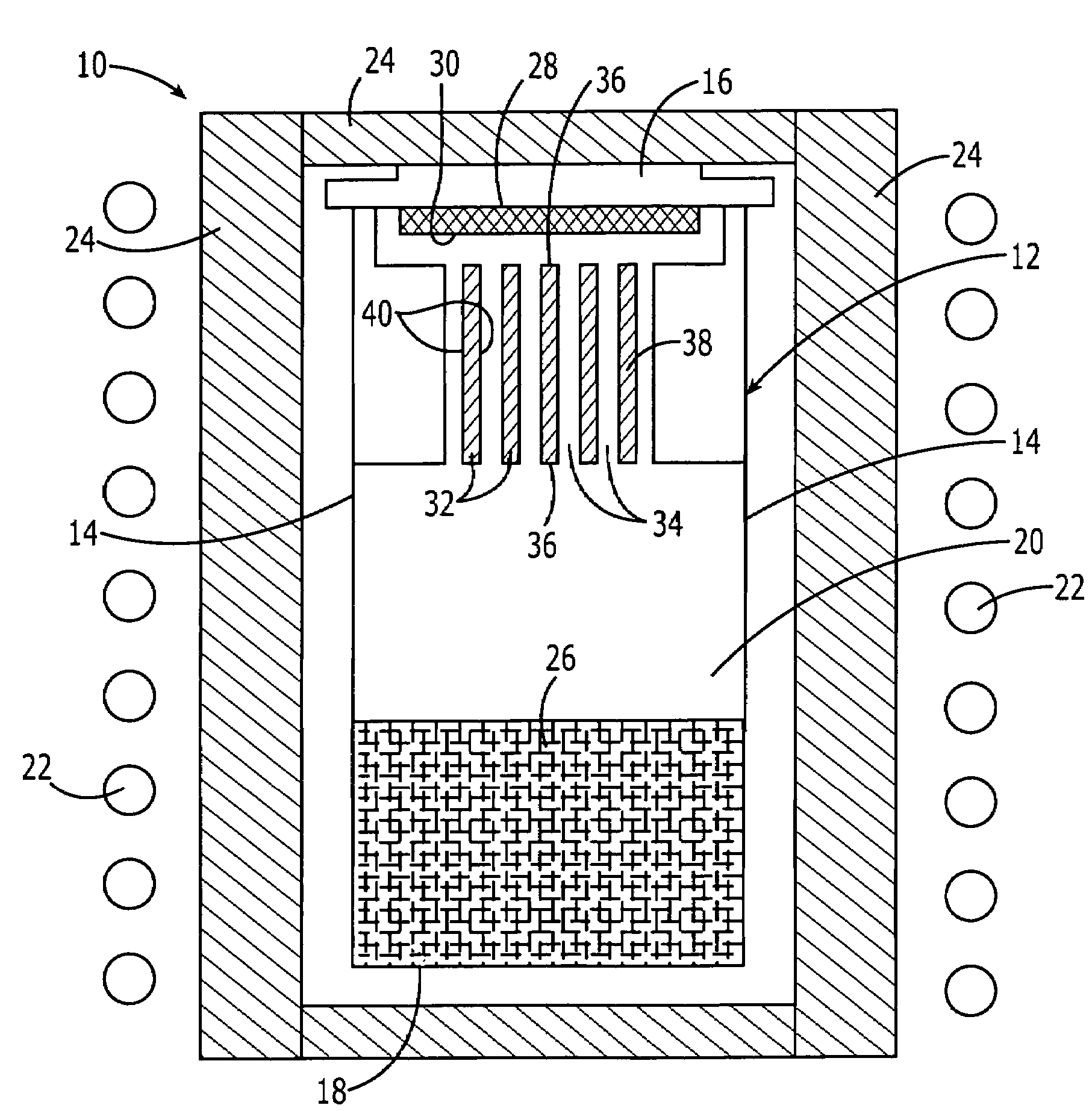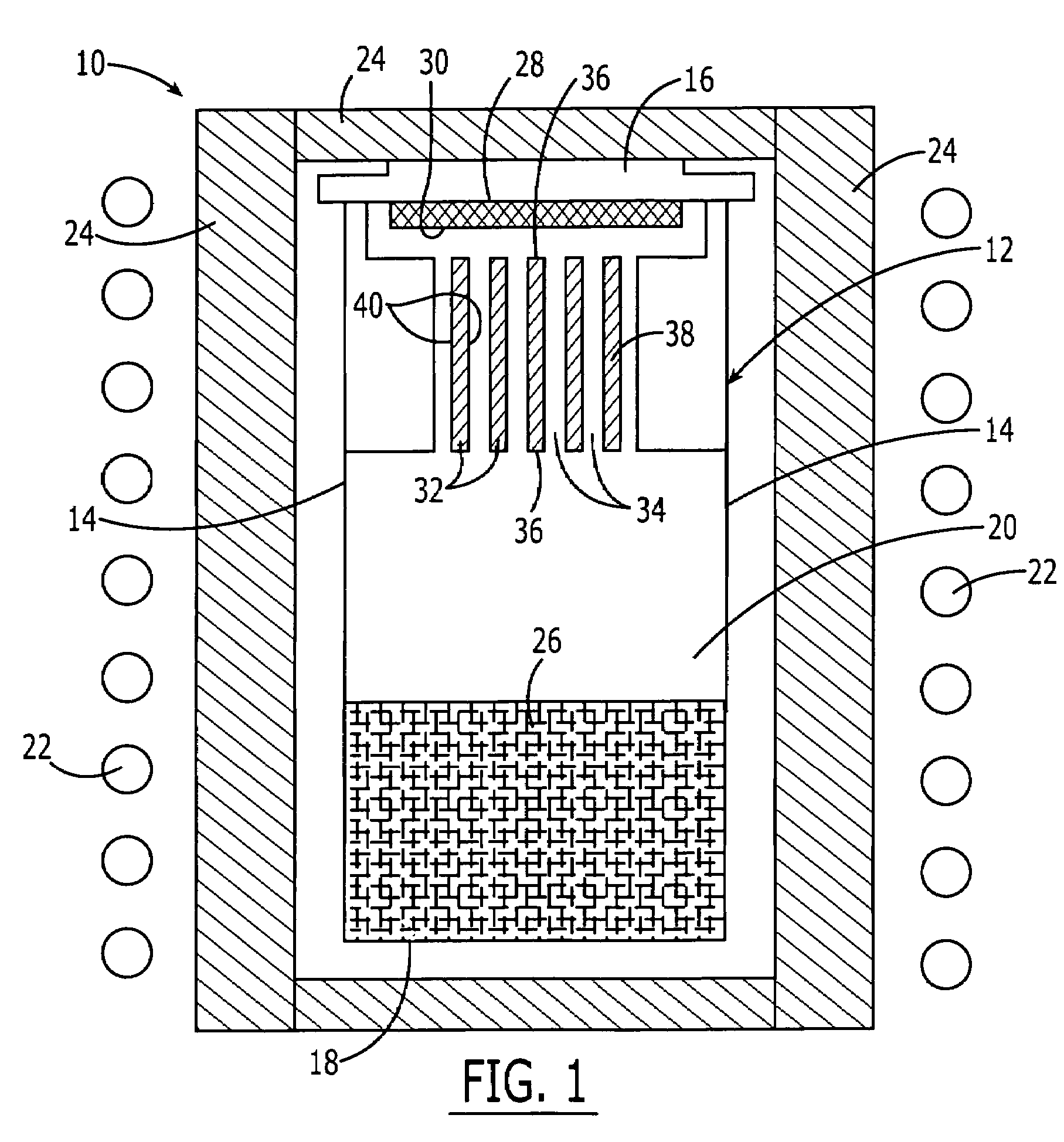Method and apparatus for the production of silicon carbide crystals
a technology of silicon carbide crystals and production methods, applied in the direction of crystal growth process, polycrystalline material growth, under a protective fluid, etc., can solve the problems of reducing the breakdown voltage of the sic device, undesirable affecting the device characteristics, current leakage, etc., to reduce the concentration of defects, and reduce the defect concentration
- Summary
- Abstract
- Description
- Claims
- Application Information
AI Technical Summary
Benefits of technology
Problems solved by technology
Method used
Image
Examples
Embodiment Construction
[0021]The present invention now will be described more fully hereinafter with reference to the accompanying drawing, in which some, but not all embodiments of the invention are shown. Indeed, this invention may be embodied in many different forms and should not be construed as limited to the embodiments set forth herein; rather, these embodiments are provided so that this disclosure will satisfy applicable legal requirements. Like numbers refer to like elements throughout.
[0022]The general aspects of various techniques for the growth of silicon carbide, including chemical vapor deposition and seeded sublimation techniques, have been generally well established for a number of years. Furthermore, those familiar with the growth of crystals, particularly in difficult material systems such as silicon carbide, will recognize that the details of a given technique can and will vary, usually purposefully, depending upon the relevant circumstances. Accordingly, descriptions given herein are m...
PUM
| Property | Measurement | Unit |
|---|---|---|
| density | aaaaa | aaaaa |
| density | aaaaa | aaaaa |
| temperature | aaaaa | aaaaa |
Abstract
Description
Claims
Application Information
 Login to View More
Login to View More - R&D
- Intellectual Property
- Life Sciences
- Materials
- Tech Scout
- Unparalleled Data Quality
- Higher Quality Content
- 60% Fewer Hallucinations
Browse by: Latest US Patents, China's latest patents, Technical Efficacy Thesaurus, Application Domain, Technology Topic, Popular Technical Reports.
© 2025 PatSnap. All rights reserved.Legal|Privacy policy|Modern Slavery Act Transparency Statement|Sitemap|About US| Contact US: help@patsnap.com


